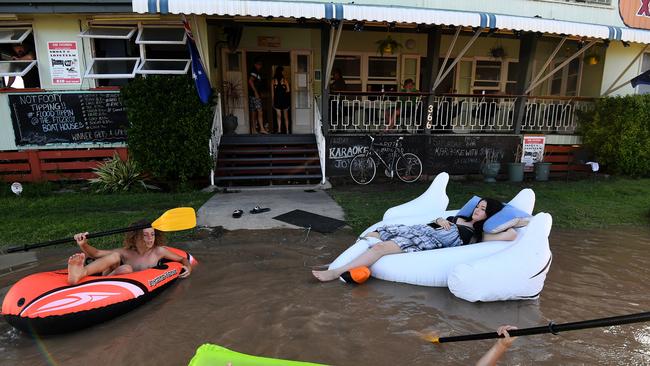Road to recovery well under way
MORE than two-thirds of the 9000km of roads damaged or destroyed in Queensland's summer of disaster have been repaired.
MORE than two-thirds of the 9000km of roads damaged or destroyed in Queensland's summer of disaster have been repaired, heading the recovery effort as clean-up gives way to rebuilding
A milestone will be reached tomorrow, 100 days after serious flooding was escalated by deadly "inland tsunamis" in Toowoomba and the Lockyer Valley, with the release of new guidelines for the rebuilding of homes wrecked by Cyclone Yasi.
A stocktake of work co-ordinated by the Queensland Reconstruction Authority underlines the magnitude of the job. Nearly 110,000 insurance claims relating to flood and cyclone destruction in the state have been lodged, 60,000 of them for damage to homes.
The Insurance Council insists the majority of these have been settled, despite simmering anger in some of the worst-affected flood zones over insurers disputing the cause of flooding.
The emergency began with floods in central and southwest Queensland in December. On January 10, floods in Toowoomba and the Lockyer Valley killed at least 19 people. More lives were lost when Ipswich and Brisbane flooded in the days that followed, and Cyclone Yasi smashed into the coast.
In all, 34 deaths have been blamed on the floods since December, and one on the cyclone.
Transport infrastructure was hit heavily. Of the 9170km of road and highways put out of action, 6156km has been repaired, according to Queensland government figures. Most of the 4748km of railway affected is back in service. Eleven of Queensland's 20 ports were affected, but all have returned to full operation.
However, 82 of the national parks closed by flood and cyclone damage remain off limits.
Although the Brisbane City Council is making progress in restoring ferry services -- only one terminal in the network of Citycat stops is still out of action -- the city's former lord mayor, now leader of the state opposition, Campbell Newman, has criticised delays in distributing payments from the $253 million Premier's Disaster Relief Fund. He has also backed complaints in north Queensland that the clean-up in the southeast corner was given priority.
Advancing funds to local councils to get on with the job of rebuilding damaged infrastructure is central to Premier Anna Bligh's recovery strategy. This reverses the usual process where the commonwealth and state reimburse them when the work is done.
To date, $406m has been advanced to 51 Queensland councils, with Canberra picking up 75 per cent of the tab under national disaster relief arrangements. However, such was the destruction in Grantham that the township of 400 has been classified a designated reconstruction area, under the direct control of the RCA, to speed voluntary relocations and land swaps. The aim is to have displaced residents in new homes by Christmas.
The release of the new building guidelines is designed to speed reconstruction in the devastated seaside hamlets of Tully Heads and Hull Heads, where 80 homes were severely damaged by a storm surge driven by the cyclone.



